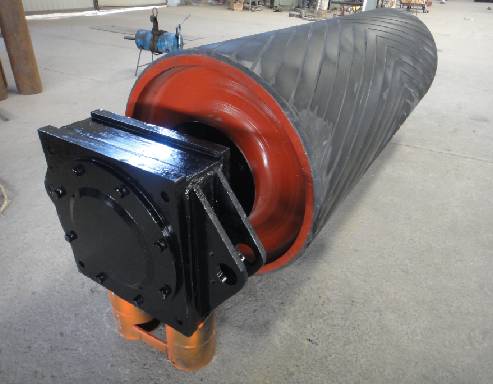 Afrikaans
Afrikaans  Albanian
Albanian  Amharic
Amharic  Arabic
Arabic  Armenian
Armenian  Azerbaijani
Azerbaijani  Basque
Basque  Belarusian
Belarusian  Bengali
Bengali  Bosnian
Bosnian  Bulgarian
Bulgarian  Catalan
Catalan  Cebuano
Cebuano  Corsican
Corsican  Croatian
Croatian  Czech
Czech  Danish
Danish  Dutch
Dutch  English
English  Esperanto
Esperanto  Estonian
Estonian  Finnish
Finnish  French
French  Frisian
Frisian  Galician
Galician  Georgian
Georgian  German
German  Greek
Greek  Gujarati
Gujarati  Haitian Creole
Haitian Creole  hausa
hausa  hawaiian
hawaiian  Hebrew
Hebrew  Hindi
Hindi  Miao
Miao  Hungarian
Hungarian  Icelandic
Icelandic  igbo
igbo  Indonesian
Indonesian  irish
irish  Italian
Italian  Japanese
Japanese  Javanese
Javanese  Kannada
Kannada  kazakh
kazakh  Khmer
Khmer  Rwandese
Rwandese  Korean
Korean  Kurdish
Kurdish  Kyrgyz
Kyrgyz  Lao
Lao  Latin
Latin  Latvian
Latvian  Lithuanian
Lithuanian  Luxembourgish
Luxembourgish  Macedonian
Macedonian  Malgashi
Malgashi  Malay
Malay  Malayalam
Malayalam  Maltese
Maltese  Maori
Maori  Marathi
Marathi  Mongolian
Mongolian  Myanmar
Myanmar  Nepali
Nepali  Norwegian
Norwegian  Norwegian
Norwegian  Occitan
Occitan  Pashto
Pashto  Persian
Persian  Polish
Polish  Portuguese
Portuguese  Punjabi
Punjabi  Romanian
Romanian  Russian
Russian  Samoan
Samoan  Scottish Gaelic
Scottish Gaelic  Serbian
Serbian  Sesotho
Sesotho  Shona
Shona  Sindhi
Sindhi  Sinhala
Sinhala  Slovak
Slovak  Slovenian
Slovenian  Somali
Somali  Spanish
Spanish  Sundanese
Sundanese  Swahili
Swahili  Swedish
Swedish  Tagalog
Tagalog  Tajik
Tajik  Tamil
Tamil  Tatar
Tatar  Telugu
Telugu  Thai
Thai  Turkish
Turkish  Turkmen
Turkmen  Ukrainian
Ukrainian  Urdu
Urdu  Uighur
Uighur  Uzbek
Uzbek  Vietnamese
Vietnamese  Welsh
Welsh  Bantu
Bantu  Yiddish
Yiddish  Yoruba
Yoruba  Zulu
Zulu Effective Solutions for Conveyor Belt Cleaning and Maintenance Practices
The Importance of Belt Cleaners in Material Handling Systems
In the modern industrial landscape, efficient material handling is crucial for the smooth operation of various businesses, particularly in sectors such as mining, manufacturing, and food processing. A critical component of these systems is the conveyor belt, which plays an integral role in transporting materials. However, to ensure that conveyor belts operate effectively and sustainably, the implementation of belt cleaners is vital. This article explores the significance of belt cleaners, their types, and how they contribute to system efficiency.
What Are Belt Cleaners?
Belt cleaners, also known as belt cleaning systems, are devices installed on conveyor belts to remove any material that adheres to the belt surface after it has discharged its load. These devices are designed to prevent carryback — the unwanted material that clings to the belt and can fall off and accumulate in areas that are difficult to clean. Carryback not only reduces production efficiency but can also lead to hazardous workplace conditions.
Types of Belt Cleaners
Belt cleaners come in various designs and types to cater to different industries and requirements. Here are the most common types
1. Primary Cleaners These are installed at the discharge end of the conveyor belt and are designed to remove the majority of the material remaining on the belt after it has transferred its load. They typically feature a blade or scraper that makes direct contact with the belt.
2. Secondary Cleaners Positioned further down the conveyor belt, secondary cleaners work in conjunction with primary cleaners to capture any material that may have been missed. They usually employ a different mechanism, such as a set of rotating cylindrical brushes, to ensure thorough cleaning.
3. Combination Cleaners As the name suggests, these cleaners integrate both primary and secondary functions into a single unit, providing a comprehensive cleaning solution that minimizes maintenance efforts and equipment costs.
4. Specialized Cleaners Depending on the application, specialized cleaners may be designed to handle specific materials or conditions, such as high-temperature environments, or to prevent contamination in food handling.
belt cleaner

Benefits of Using Belt Cleaners
The advantages of using belt cleaners are multifaceted and have a significant impact on operational efficiency
1. Reduced Carryback By effectively removing material from the belt, cleaner systems minimize carryback, thus preventing material buildup on the conveyor, which can cause damage and maintenance issues.
2. Improved Safety Carryback can create hazardous conditions for workers through slips, trips, and falls. Belt cleaners help maintain a safer work environment by reducing these risks.
3. Lower Maintenance Costs Frequent buildup of materials can lead to increased wear and tear on conveyor components. By keeping the belt clean, the longevity of both the belt and other machinery is enhanced, leading to reduced maintenance expenses.
4. Increased Productivity When conveyor systems operate efficiently without interruptions caused by carryback issues, overall productivity improves. This efficiency translates into lower operational costs and higher throughput.
5. Environmental Protection By minimizing spillage, belt cleaners contribute to a cleaner work environment and reduce waste, benefiting both the company and the surrounding ecosystem.
Conclusion
In conclusion, belt cleaners are an essential investment in any operation that relies on conveyor systems for material handling. By preventing carryback and promoting operational efficiency, these devices not only enhance safety but also contribute to cost savings and environmental sustainability. As industries continue to evolve and demand for efficient operations grows, the significance of belt cleaning solutions will undoubtedly increase, making them an indispensable part of modern material handling systems. Choosing the right belt cleaner tailored to specific needs can lead to substantial improvements in productivity and system reliability, ensuring businesses remain competitive in their respective markets.
-
Revolutionizing Conveyor Reliability with Advanced Rubber Lagging PulleysNewsJul.22,2025
-
Powering Precision and Durability with Expert Manufacturers of Conveyor ComponentsNewsJul.22,2025
-
Optimizing Conveyor Systems with Advanced Conveyor AccessoriesNewsJul.22,2025
-
Maximize Conveyor Efficiency with Quality Conveyor Idler PulleysNewsJul.22,2025
-
Future-Proof Your Conveyor System with High-Performance Polyurethane RollerNewsJul.22,2025
-
Driving Efficiency Forward with Quality Idlers and RollersNewsJul.22,2025





























